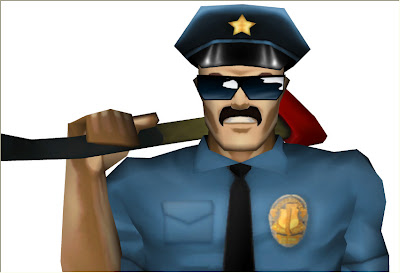Before we move on, an explanation of the tools employed and terms involved. I'm currently using Adobe Photoshop CS4 but their TGA implementation hasn't changed in some time. I've been using Nvidia's Texture Tools for some time now to create DDS files from TGA files. It has been acceptable but I found that ATI has it's own DDS application, Compressonator. It has a graphical interface but neither is particularly user friendly.
The TGA format: TGA, or Targa, can only be compressed in one way Run-length encoding, or RLE. RLE works simply grouping identical colors. You can take advantage of this by filling empty portions of your skins with pure black. If you do not to this, and your skin is filled with detail or noise, then you may get no file size benefit from this tactic. The only other option on the Photoshop save dialogue is "Resolution". This refers to color resolution, not height/width. 16 bit is like GIF compression resulting in a maximum of 256 colors. You may want to use this for small accessory textures. 24 bit is your standard format. 32 bit is for saving alpha channels.

The DDS format: DDS is much more compressed than TGA. It is designed to be loaded easily into your graphics card's memory and to have "mip maps" built in. Mip maps are an array of reduced resolution versions of the image included in the file so when viewed at a distance the difference is minimal. This can result is a noticeably increase in speed.






